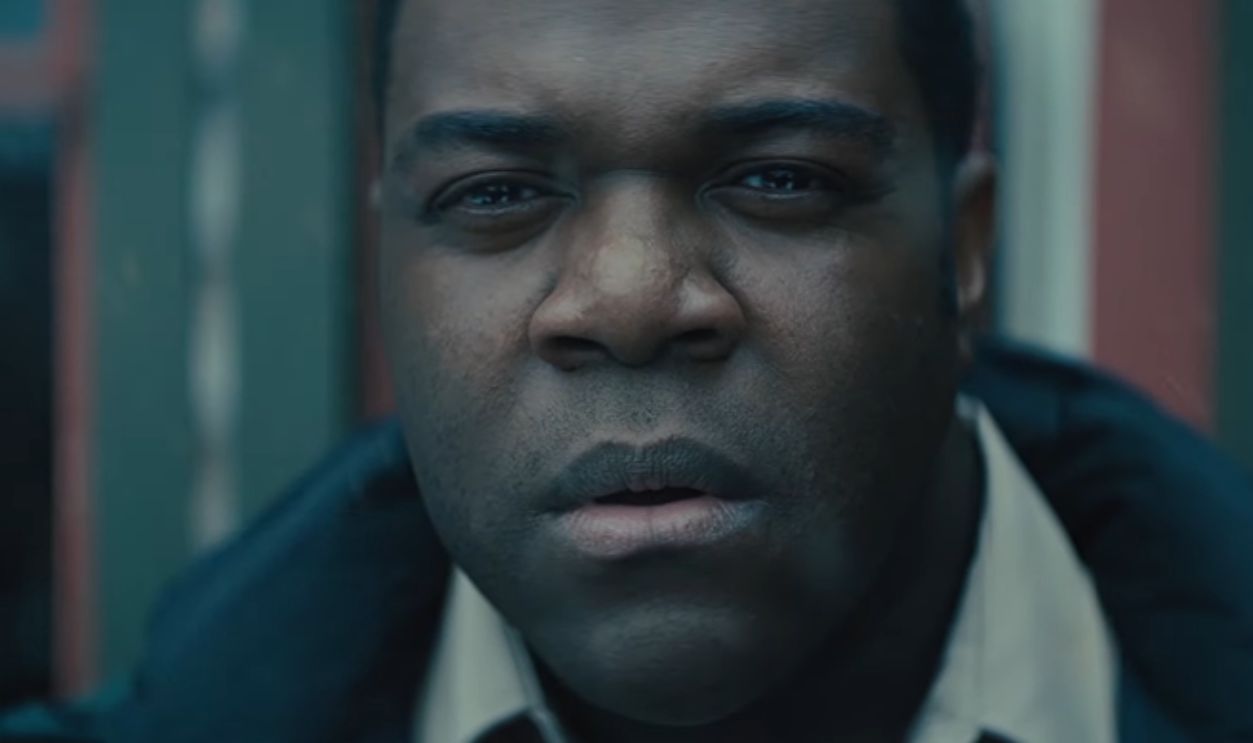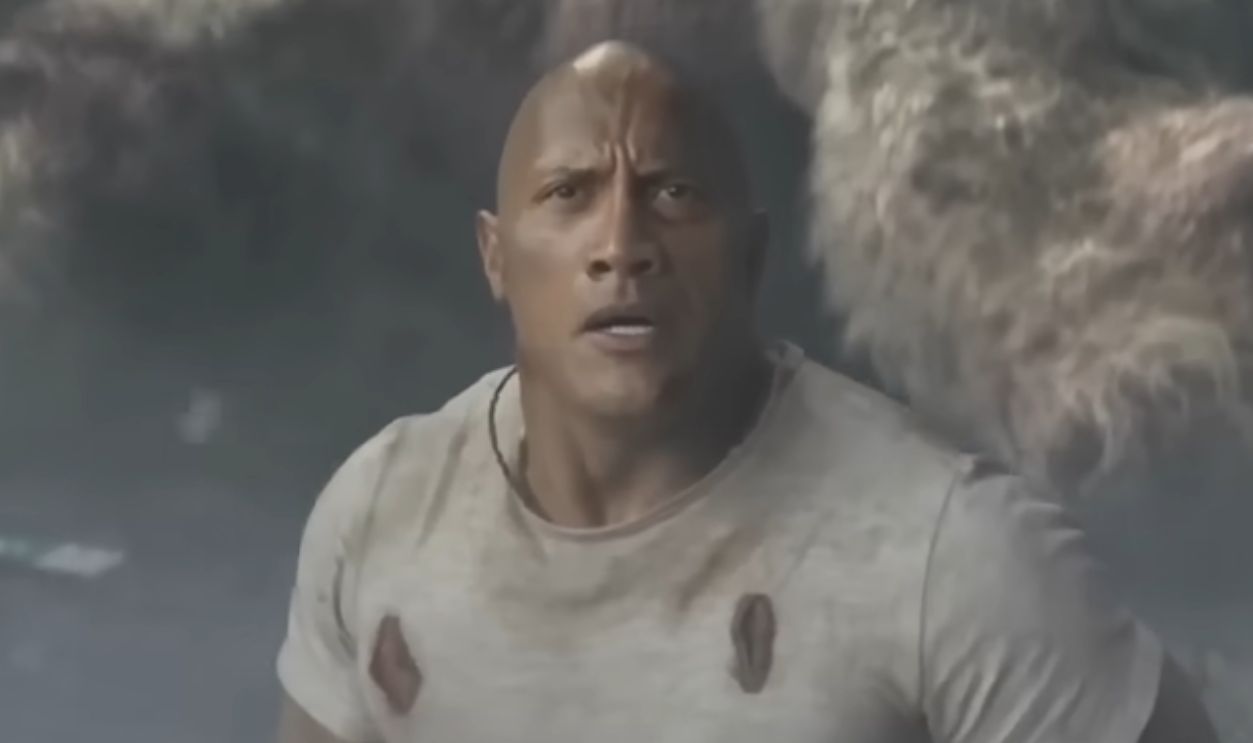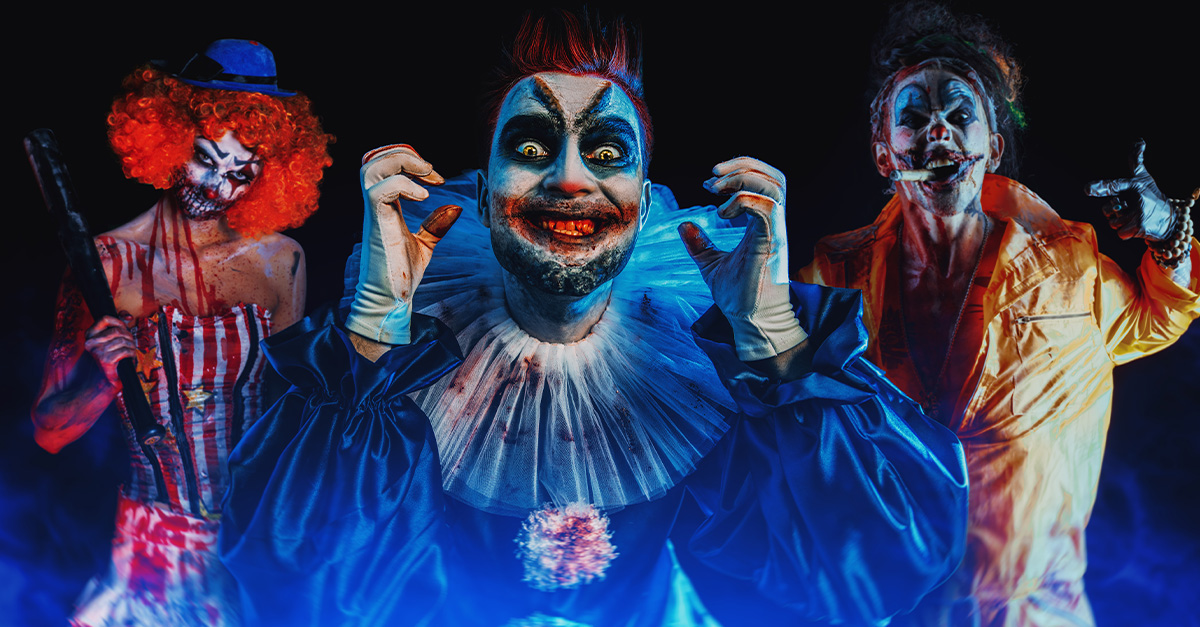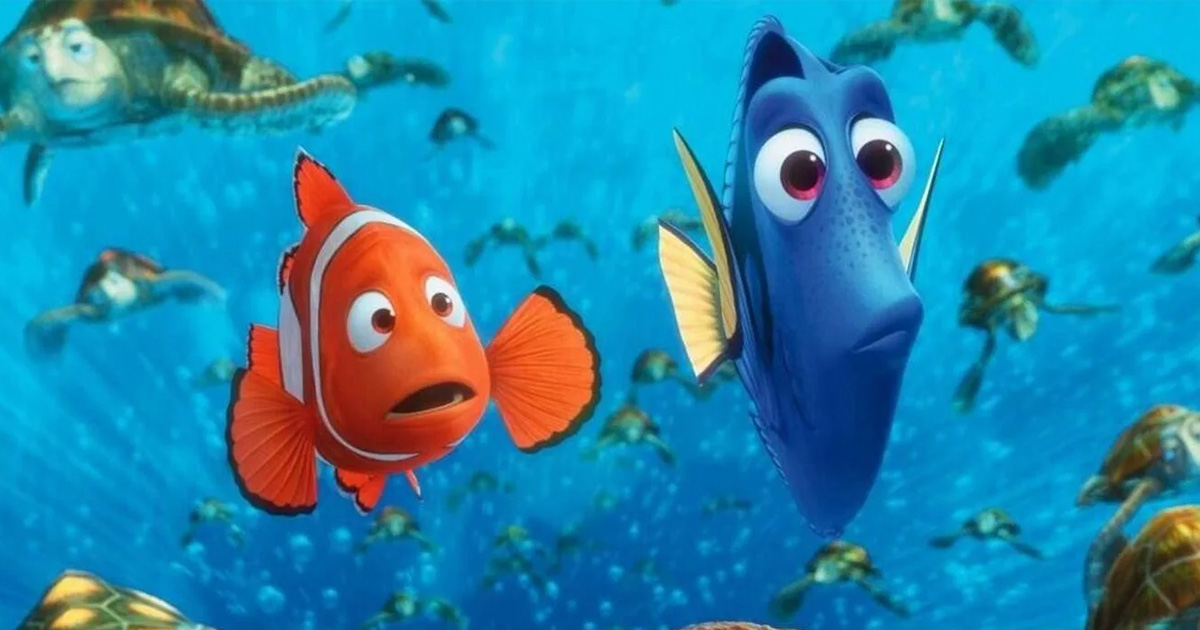Pixels To Popcorn
Turns out, not all game movies are disasters. A few quietly nailed it, balancing chaos and charm in unexpected ways. They didn’t copy the games; they captured their pulse and made it cinematic.

The Super Mario Bros Movie (2023)
Nintendo's iconic plumber finally found redemption on the big screen, shattering expectations by grossing an incredible $1.361 billion worldwide. This animated adventure claimed the crown as the highest-grossing video game adaptation ever at the time of its release.
 Screenshot from The Super Mario Bros. Movie, Universal Pictures
Screenshot from The Super Mario Bros. Movie, Universal Pictures
The Super Mario Bros Movie (Cont.)
Jack Black's performance as Bowser particularly stood out among the talented voice cast. Critics and audiences alike praised his charismatic portrayal, bringing unexpected depth and genuine humor to the fire-breathing turtle king. While professional reviewers offered mixed opinions on the overall film, most appreciated its vibrant animation.
 Screenshot from The Super Mario Bros. Movie, Universal Pictures
Screenshot from The Super Mario Bros. Movie, Universal Pictures
Sonic The Hedgehog (2020)
When Paramount revealed Sonic's original design, internet backlash prompted an unprecedented three-month delay for a complete character redesign. This remarkable response to fan feedback demonstrated rare humility from a major studio and ultimately saved the film from potential disaster.
 Screenshot from Sonic the Hedgehog, Paramount Pictures
Screenshot from Sonic the Hedgehog, Paramount Pictures
Sonic The Hedgehog (Cont.)
The speedy blue hedgehog raced to over $319 million worldwide, with Ben Schwartz providing the perfect voice alongside Jim Carrey's scene-stealing performance as Dr Robotnik. Their chemistry proved so effective that a sequel followed in 2022.
 Screenshot from Sonic the Hedgehog, Paramount Pictures
Screenshot from Sonic the Hedgehog, Paramount Pictures
Detective Pikachu (2019)
Ryan Reynolds brought his trademark wit and charm to the fuzzy yellow detective in what became a groundbreaking moment for gaming's most valuable franchise. As the first-ever live-action Pokemon film after decades of animated features, Detective Pikachu took a bold approach that paid off handsomely.
 Screenshot from Detective Pikachu, Warner Bros. Pictures
Screenshot from Detective Pikachu, Warner Bros. Pictures
Detective Pikachu (Cont.)
Critics particularly praised the film's impressive visual effects and detailed world-building. Ryme City came alive as a believable metropolis where humans and Pokemon coexist, with creatures that felt tangible rather than cartoonish. This attention to detail created an immersive experience.
 Screenshot from Detective Pikachu, Warner Bros. Pictures
Screenshot from Detective Pikachu, Warner Bros. Pictures
Werewolves Within (2021)
A notable 86% approval rating on Rotten Tomatoes makes this adaptation one of the most critically acclaimed video game movies ever made. Based on Ubisoft's VR social deduction game, Werewolves Within demonstrates that sometimes the most compelling adaptations come from unexpected source material.
 Screenshot from Werewolves Within, IFC Films
Screenshot from Werewolves Within, IFC Films
Werewolves Within (Cont.)
The horror-comedy's snow-covered setting draws the perfect isolated atmosphere for mounting tension and suspicion. Set in the small town of Beaverfield during a fierce winter storm, the film traps its eccentric characters together as they try to determine which neighbor might secretly be a werewolf.
 Screenshot from Werewolves Within, IFC Films
Screenshot from Werewolves Within, IFC Films
Mortal Kombat (1995)
That iconic techno theme "Techno Syndrome" became recognizable at once to a generation of moviegoers, with its infectious "MORTAL KOMBAT!" shout cementing itself in pop culture. This cultural impact extended beyond theaters, helping to establish fighting games in mainstream entertainment.
 Screenshot from Mortal Kombat, Warner Bros. Pictures
Screenshot from Mortal Kombat, Warner Bros. Pictures
Mortal Kombat (Cont.)
Commercial success made this fighting tournament film a landmark in video game adaptations, grossing over $122 million. Based on Midway's brutal fighting franchise, the 1995 film embraced the source material's martial arts action while strategically toning down the infamous fatalities.
 Screenshot from Mortal Kombat, Warner Bros. Pictures
Screenshot from Mortal Kombat, Warner Bros. Pictures
Tomb Raider (2018)
Taking inspiration from the video game reboot of 2013 rather than the earlier titles, this adaptation reimagined Lara Croft's origin story for a new generation. Academy Award winner Alicia Vikander stepped into the iconic role, bringing a more grounded and vulnerable interpretation of the character.
 Screenshot from Tomb Raider, Warner Bros. Pictures
Screenshot from Tomb Raider, Warner Bros. Pictures
Tomb Raider (Cont.)
The film's action sequences earned particular praise from critics, showcasing Vikander's physical commitment to the role. With a worldwide gross exceeding $274 million, Tomb Raider received continued audience interest in the adventures of gaming's most famous archaeologist.
 Screenshot from Tomb Raider, Warner Bros. Pictures
Screenshot from Tomb Raider, Warner Bros. Pictures
Rampage (2018)
Dwayne "The Rock" Johnson's star power helped convert a simple 1986 arcade game about giant monsters destroying cities into a blockbuster success. Despite the minimalist plot of the original game—where players controlled mutated creatures smashing buildings—the film crafted an engaging narrative.
 Screenshot from Rampage, Warner Bros. Pictures
Screenshot from Rampage, Warner Bros. Pictures
Rampage (Cont.)
It focused on the relationship between Johnson's primatologist character and an albino gorilla named George. Audiences worldwide loved this monster-filled spectacle, which grossed $428 million at the global box office. The film's centerpiece sequence features its colossal creatures attacking Chicago in gloriously destructive fashion.
 Screenshot from Rampage, Warner Bros. Pictures
Screenshot from Rampage, Warner Bros. Pictures
Silent Hill (2006)
Director Christophe Gans brought Konami's psychological horror series to life with a visual style that captured the game's distinctive atmosphere. The film's fog-shrouded town, rusted industrial environments, and disturbing creature designs faithfully recreated the unsettling aesthetic that made the games so memorable.
 Screenshot from Silent Hill, Sony Pictures Home Entertainment
Screenshot from Silent Hill, Sony Pictures Home Entertainment
Silent Hill (Cont.)
Silent Hill grossed over $100 million globally, demonstrating the commercial potential for horror-focused video game adaptations. The film's disturbing imagery and otherworldly setting established a unique visual identity that stood apart from the typical horror fare of the time.
 Screenshot from Silent Hill, Sony Pictures Home Entertainment
Screenshot from Silent Hill, Sony Pictures Home Entertainment
Resident Evil (2002)
Paul WS Anderson's adaptation took creative liberties with Capcom's survival horror franchise, most notably by centering on Milla Jovovich's character, Alice, who was created specifically for the films. This bold choice freed the movie from strictly following game canon.
 Screenshot from Resident Evil, Screen Gems
Screenshot from Resident Evil, Screen Gems
Resident Evil (Cont.)
It incorporated iconic elements, such as the Umbrella Corporation, zombies, and mutated creatures, that fans expected. The film's commercial success—bagging around $102 million—launched what would become one of the longest-running video game movie franchises in history.
 Screenshot from Resident Evil, Screen Gems
Screenshot from Resident Evil, Screen Gems
Prince Of Persia: The Sands Of Time (2010)
Jake Gyllenhaal stepped into the role of Prince Dastan in this ambitious adaptation of Ubisoft's 2003 time-manipulation action-adventure. Legendary producer Jerry Bruckheimer brought his blockbuster sensibilities to the project, resulting in a lavish production with elaborate sets, extensive stunt work, and visual effects.
 Screenshot from Prince of Persia: The Sands of Time, Walt Disney Studios Motion Pictures
Screenshot from Prince of Persia: The Sands of Time, Walt Disney Studios Motion Pictures
Prince Of Persia: The Sands Of Time (Cont.)
The movie's commercial performance impressed industry observers, accumulating approximately $336 million despite mixed reviews. While critics debated various aspects of the adaptation, many praised the film's action sequences and Gyllenhaal's committed physical performance.
 Screenshot from Prince of Persia: The Sands of Time, Walt Disney Studios Motion Pictures
Screenshot from Prince of Persia: The Sands of Time, Walt Disney Studios Motion Pictures
Warcraft (2016)
Director Duncan Jones brought Blizzard Entertainment's massively popular fantasy universe to life with spectacular visual effects and ambitious world-building. The film meticulously recreated the distinctive aesthetic of Azeroth, from the imposing orc warriors to the magnificent cities.
 Screenshot from Warcraft, Universal Pictures
Screenshot from Warcraft, Universal Pictures
Warcraft (Cont.)
Box office numbers tell an interesting story about this adaptation's global appeal, as Warcraft accumulated $439 million worldwide, with the majority coming from international markets—particularly China. This impressive financial performance established it as one of the highest-grossing video game adaptations ever.
 Screenshot from Warcraft, Universal Pictures
Screenshot from Warcraft, Universal Pictures
Street Fighter (1994)
The well-known Jean-Claude Van Damme brought his martial arts star power to the role of Colonel Guile in this early attempt to translate Capcom's fighting game phenomenon to cinema. Released on December 23, 1994, the movie arrived during the height of Street Fighter II's arcade and console popularity.
 Screenshot from Street Fighter, Universal Pictures
Screenshot from Street Fighter, Universal Pictures
Street Fighter (Cont.)
This film gained poignant significance as it featured the final performance of acclaimed actor Raul Julia as the villainous M Bison. Despite battling illness during production, Julia delivered a memorably theatrical performance that has become one of the most celebrated aspects of the film among fans.
 Screenshot from Street Fighter, Universal Pictures
Screenshot from Street Fighter, Universal Pictures
Doa: Dead Or Alive (2006)
Martial arts director Corey Yuen brought his action expertise to this adaptation of Tecmo's fighting game series, resulting in kinetic combat sequences that captured the fast-paced nature of the source material. Filming across picturesque locations in China and Thailand provided a visually stunning backdrop for the tournament setting.
 Screenshot from DOA: Dead or Alive, The Weinstein Company
Screenshot from DOA: Dead or Alive, The Weinstein Company
Doa: Dead Or Alive (Cont.)
Particular attention was paid to the fight choreography that defined the games. The film cleverly incorporated elements from across the franchise, including nods to the beach volleyball spin-off series that had become a cultural phenomenon in its own right.
 Screenshot from DOA: Dead or Alive, The Weinstein Company
Screenshot from DOA: Dead or Alive, The Weinstein Company
Assassin's Creed (2016)
Michael Fassbender took on dual roles as modern-day character Callum Lynch and his 15th-century Spanish ancestor Aguilar in this adaptation of Ubisoft's time-hopping action franchise. The film ambitiously attempted to translate the games' complex premise about genetic memory.
 Screenshot from Assassin’s Creed, 20th Century Fox
Screenshot from Assassin’s Creed, 20th Century Fox
Assassin's Creed (Cont.)
With a worldwide gross of around $240 million, the film demonstrated the commercial potential of Ubisoft's flagship franchise despite critical reservations. Producer Jerry Bruckheimer brought his blockbuster sensibilities to the project, resulting in elaborate production design and incredible historical sequences.
 Screenshot from Assassin’s Creed, 20th Century Fox
Screenshot from Assassin’s Creed, 20th Century Fox
Tekken (2010)
Namco's long-running fighting game tournament came to life with Jon Foo stepping into the role of Jin Kazama, the troubled martial artist seeking vengeance against his grandfather, Heihachi Mishima. The film incorporated numerous characters from the franchise's extensive roster.
 Screenshot from Tekken, Warner Bros. Japan
Screenshot from Tekken, Warner Bros. Japan
Tekken (Cont.)
Unlike many fighting game adaptations that received wide theatrical release, Tekken found its audience primarily through the direct-to-video market in the United States. This distribution approach allowed the film to focus more directly on serving existing fans.
 Screenshot from Tekken, Warner Bros. Japan
Screenshot from Tekken, Warner Bros. Japan
Monster Hunter (2020)
Well, Milla Jovovich reunited with director Anderson for another Capcom adaptation, this time bringing the monster-slaying action RPG to theaters. As Captain Artemis, Jovovich's character offered an outsider's perspective that helped introduce the fantastical world to audiences unfamiliar with the source material.
 Screenshot from Monster Hunter, Sony Pictures Entertainment
Screenshot from Monster Hunter, Sony Pictures Entertainment
Monster Hunter (Cont.)
However, it still incorporated the massive creatures and distinctive weapons that define the game series. Despite facing the challenge of a pandemic-affected theatrical release, Monster Hunter still managed to collect about $47.9 million worldwide against its $60 million budget.
 Screenshot from Monster Hunter, Sony Pictures Entertainment
Screenshot from Monster Hunter, Sony Pictures Entertainment
Hitman (2007)
In this film, which is inspired by the stealth assassination games from IO Interactive, Timothy Olyphant played the cold, calculating Agent 47. It was filmed in a number of locations, including Bulgaria, Russia, and Turkey, which greatly contributed to capturing the global atmosphere that game enthusiasts like.
 Screenshot from Hitman, 20th Century Fox
Screenshot from Hitman, 20th Century Fox
Hitman (Cont.)
Hitman attempted to capture the methodical precision that defined the gameplay while adding more conventional action elements to appeal to broader audiences. By focusing on the character's mysterious background and professional code, the movie brought an intriguing protagonist to the screen.
 Screenshot from Hitman, 20th Century Fox
Screenshot from Hitman, 20th Century Fox
Need For Speed (2014)
Remember the Breaking Bad star Aaron Paul? He transitioned to leading man status as Tobey Marshall in this adaptation of Electronic Arts' popular racing franchise. Rather than attempting to directly adapt any particular game's storyline, the film captured the spirit of the series with its emphasis on high-performance vehicles.
 Screenshot from Need for Speed, Walt Disney Studios Motion Pictures
Screenshot from Need for Speed, Walt Disney Studios Motion Pictures
Need For Speed (Cont.)
The film's commitment to practical stunt work and real car sequences resulted in a global box office haul exceeding $203 million. Need for Speed demonstrated how game adaptations could succeed by capturing the essence of the gaming experience—in this case, the thrill of high-speed driving.
 Screenshot from Need for Speed, Walt Disney Studios Motion Pictures
Screenshot from Need for Speed, Walt Disney Studios Motion Pictures
Max Payne (2008)
Mark Wahlberg stepped into the role of the troubled detective from Remedy Entertainment's noir-influenced action series. The film attempted to translate the game's distinctive visual style, which had been heavily inspired by graphic novels and Hong Kong action cinema.
 Screenshot from Max Payne, 20th Century Fox
Screenshot from Max Payne, 20th Century Fox
Max Payne (Cont.)
Despite critical reservations about the adaptation's pacing and narrative changes, Max Payne still managed to bag over $85 million worldwide. The film maintained the core elements of the character's revenge-driven quest while adjusting certain supernatural aspects of the original story.
 Screenshot from Max Payne, 20th Century Fox
Screenshot from Max Payne, 20th Century Fox
Dead Rising: Watchtower (2015)
Unlike many video game adaptations that received traditional theatrical releases, Dead Rising: Watchtower pioneered a different distribution approach by launching exclusively on the streaming platform Crackle, foreshadowing how digital distribution would become increasingly important for video game adaptations.
 Screenshot from Dead Rising: Watchtower, Sony Pictures Entertainment
Screenshot from Dead Rising: Watchtower, Sony Pictures Entertainment
Dead Rising: Watchtower (Cont.)
The film faithfully recreated one of the most distinctive elements of the game series: the use of improvised weapons against zombie hordes. This creative combat approach distinguished Dead Rising from other zombie properties and gave the adaptation a unique selling point that resonated with fans of the games.
 Screenshot from Dead Rising: Watchtower, Sony Pictures Entertainment
Screenshot from Dead Rising: Watchtower, Sony Pictures Entertainment
Postal (2007)
Director Uwe Boll adapted the controversial video game series from Running With Scissors to the big screen, resulting in an interesting film. Postal leaned fully into the outrageous humor and satirical take on American culture that defined the franchise.
 Screenshot from Postal, Vivendi Entertainment
Screenshot from Postal, Vivendi Entertainment
Postal (Cont.)
The film unfolds with chaotic and violent confrontations involving the cult, Al-Qaeda terrorists secretly hiding in the town since 9/11, the police, and local citizens. Essentially, it is a film that deliberately pushes boundaries and lampoons various sensitive subjects with an offbeat and chaotic style.
 Screenshot from Postal, Vivendi Entertainment
Screenshot from Postal, Vivendi Entertainment
BloodRayne (2005)
Filmed against the atmospheric backdrop of Romanian locations, the production brought an appropriate gothic sensibility to the vampire-hunting narrative. The film assembled a surprisingly accomplished supporting cast, including acclaimed actors Ben Kingsley and Michelle Rodriguez.
 Screenshot from BloodRayne, Romar Entertainment
Screenshot from BloodRayne, Romar Entertainment
BloodRayne (Cont.)
Their presence lent additional credibility to the adaptation during a period when video game films were still struggling to attract top-tier talent. While BloodRayne received mixed critical reception, it represented an important attempt to translate the games' vampire mythology and period setting to film.
 Screenshot from BloodRayne, Romar Entertainment
Screenshot from BloodRayne, Romar Entertainment





